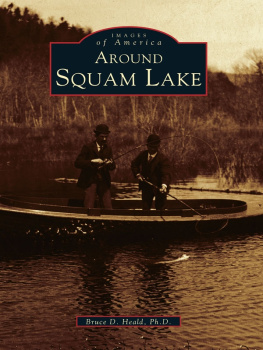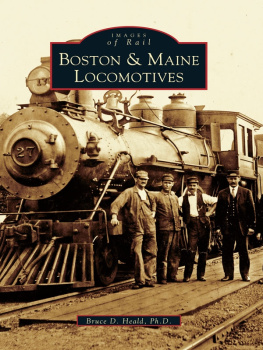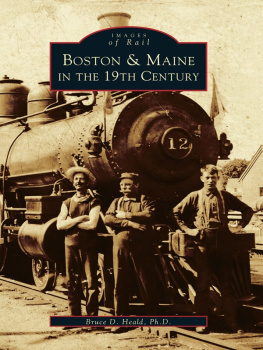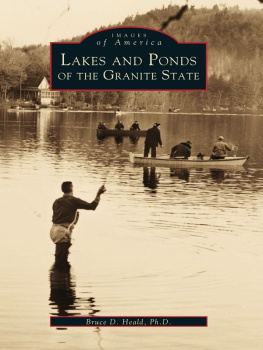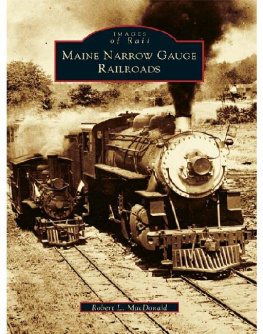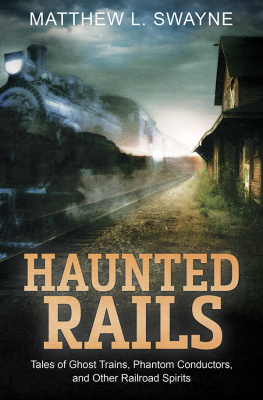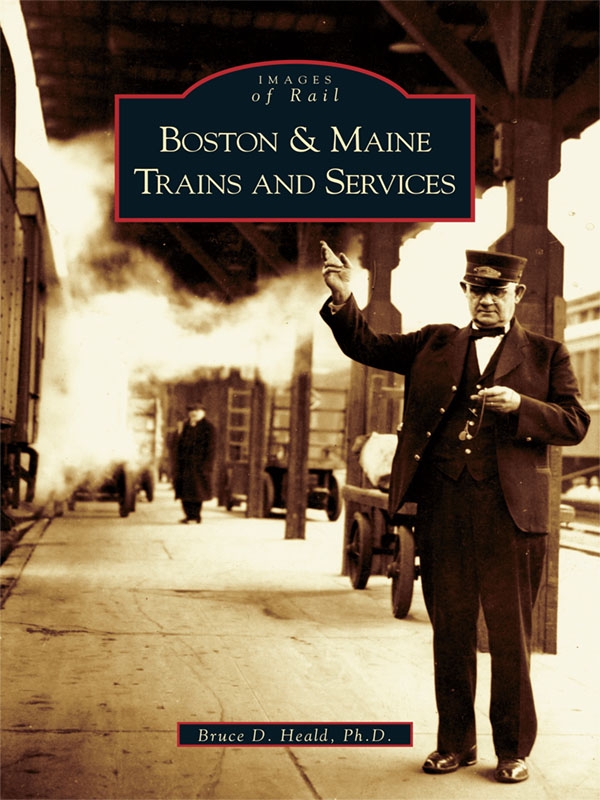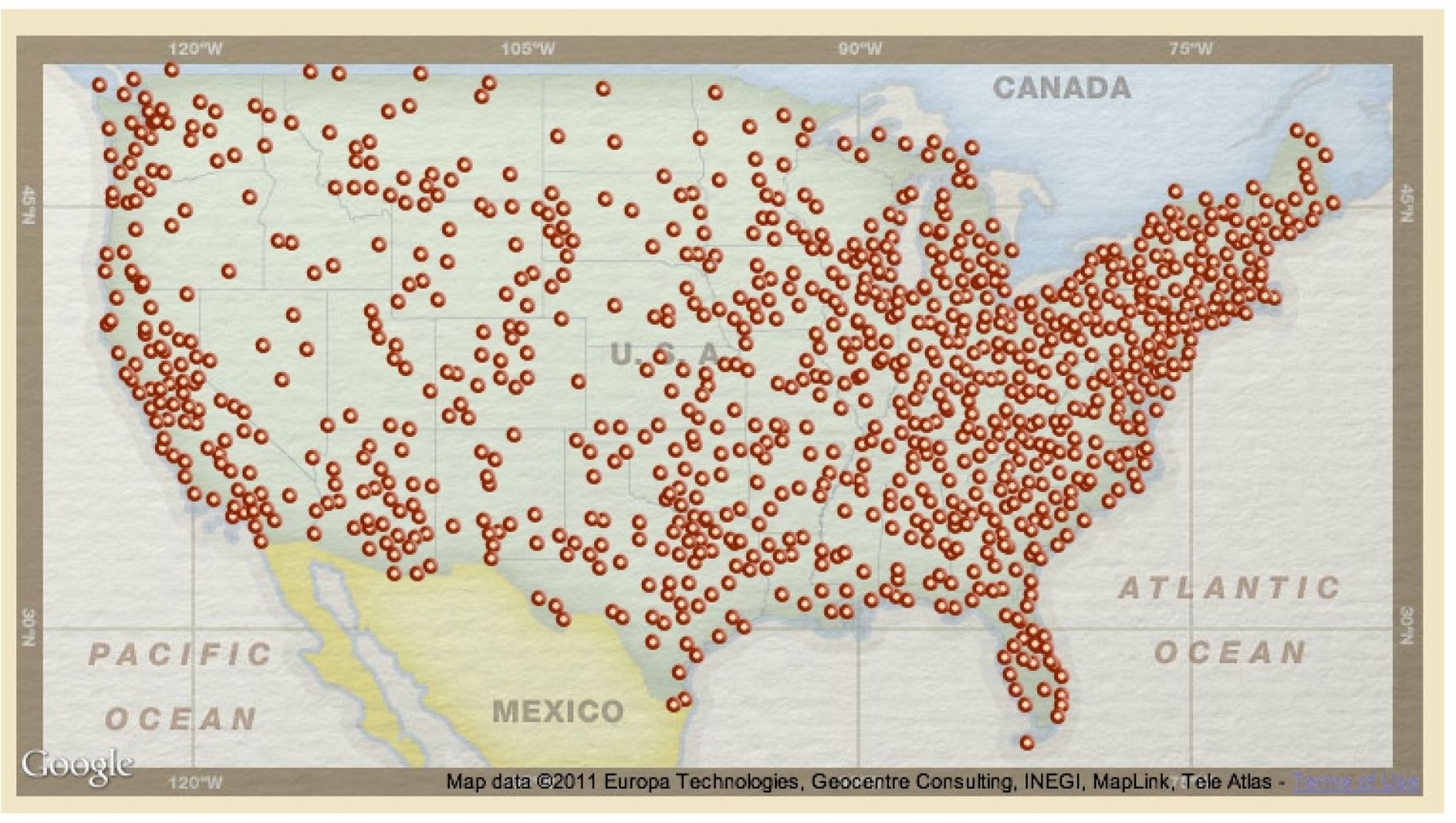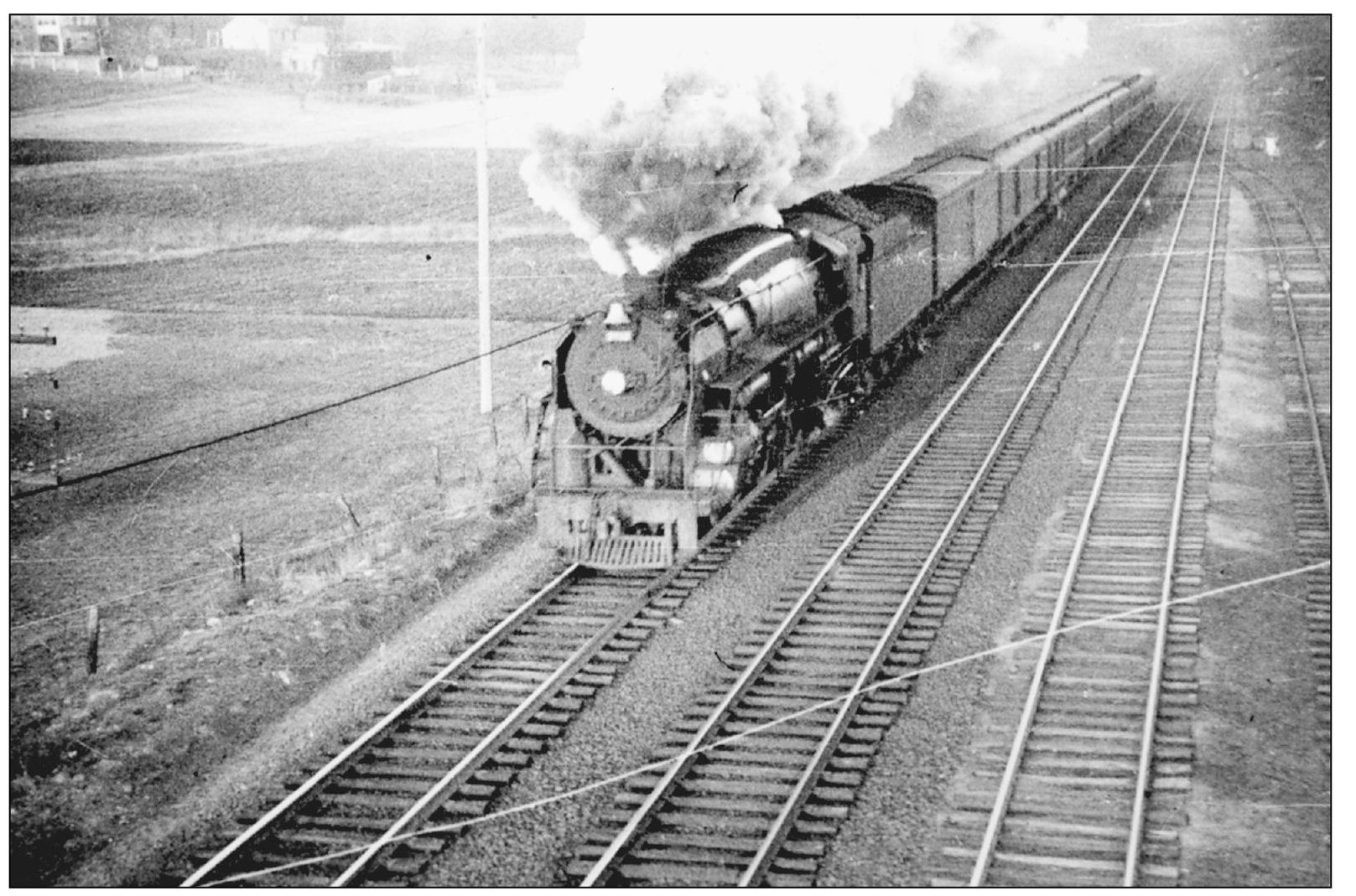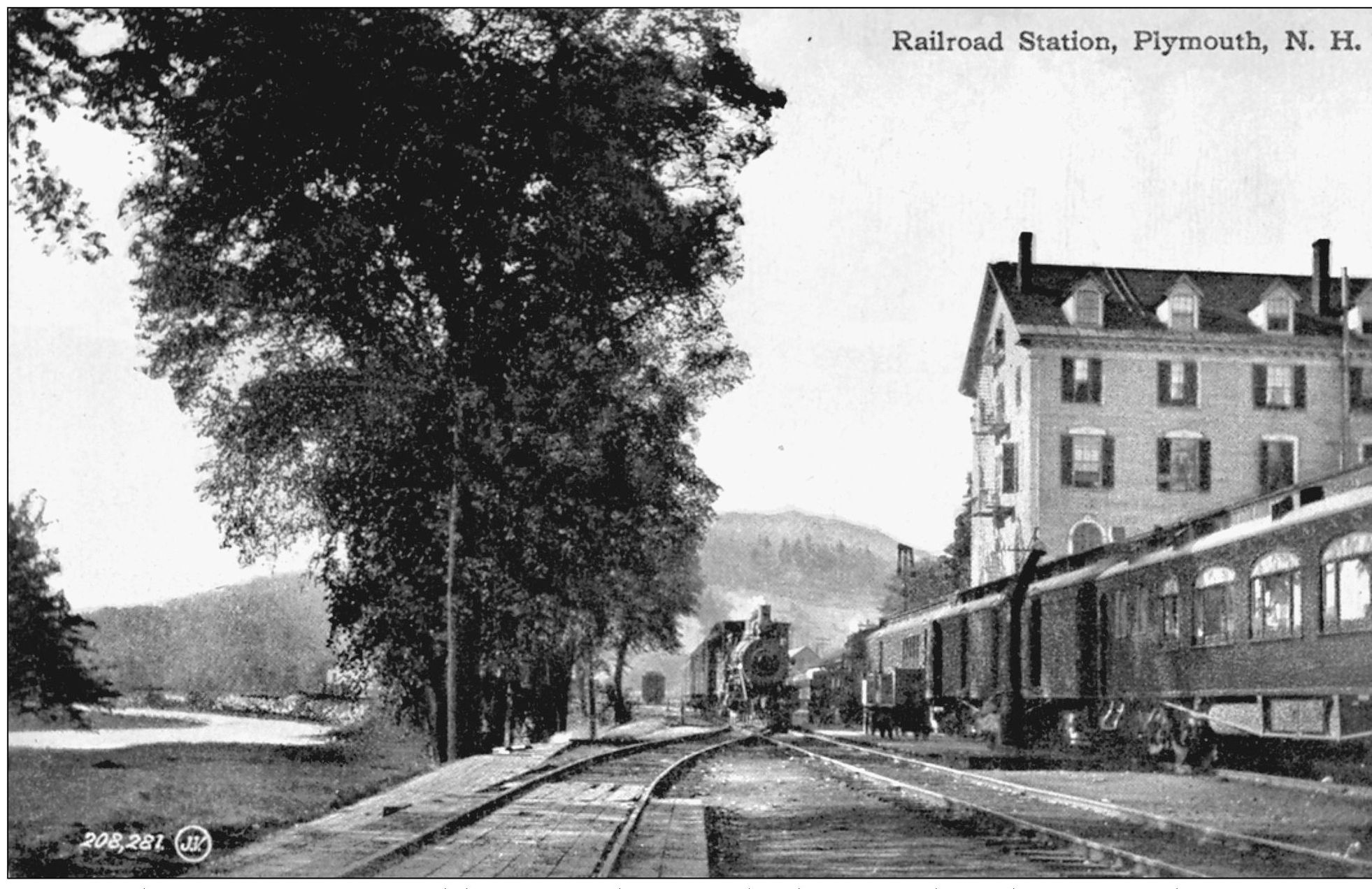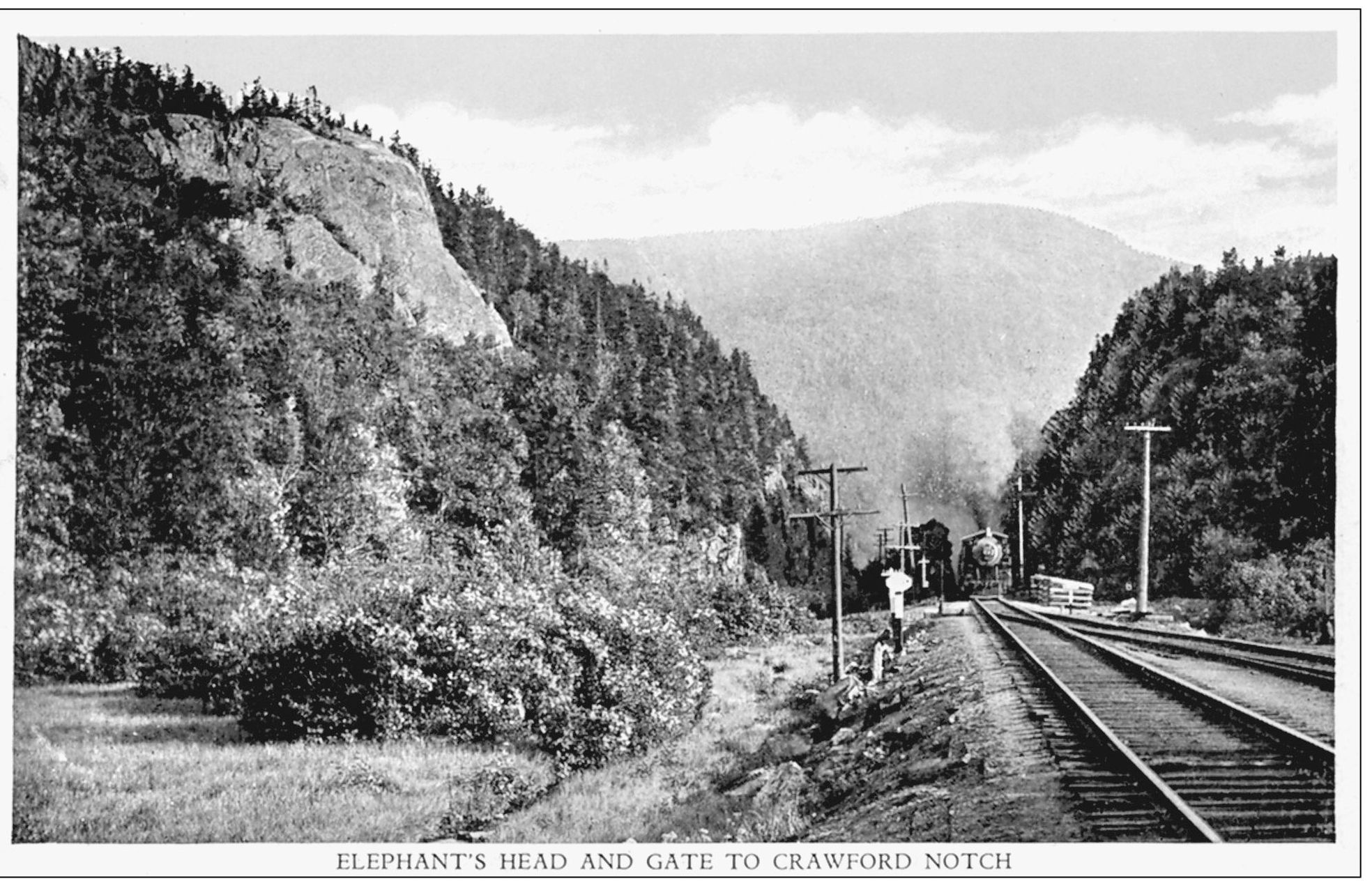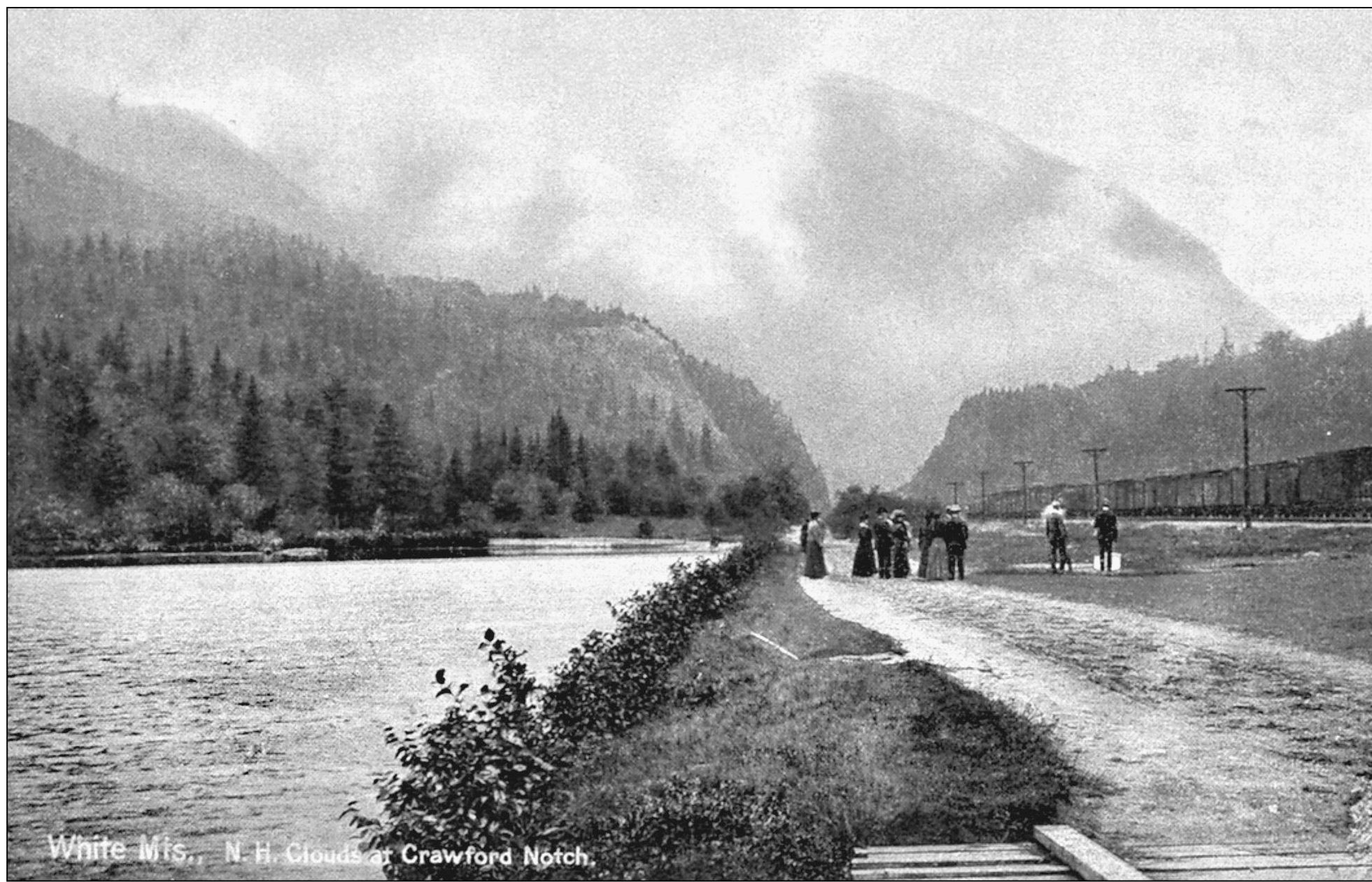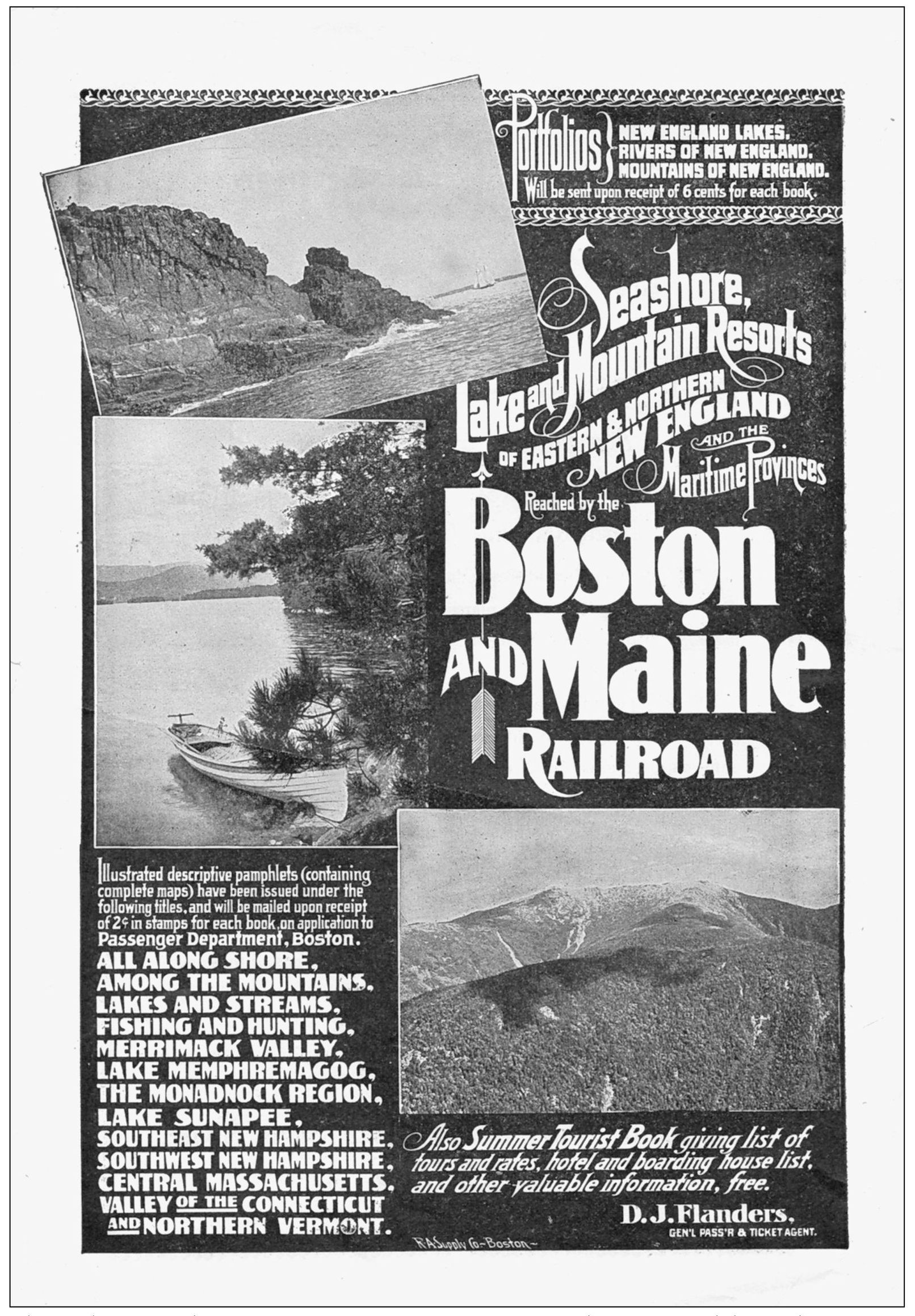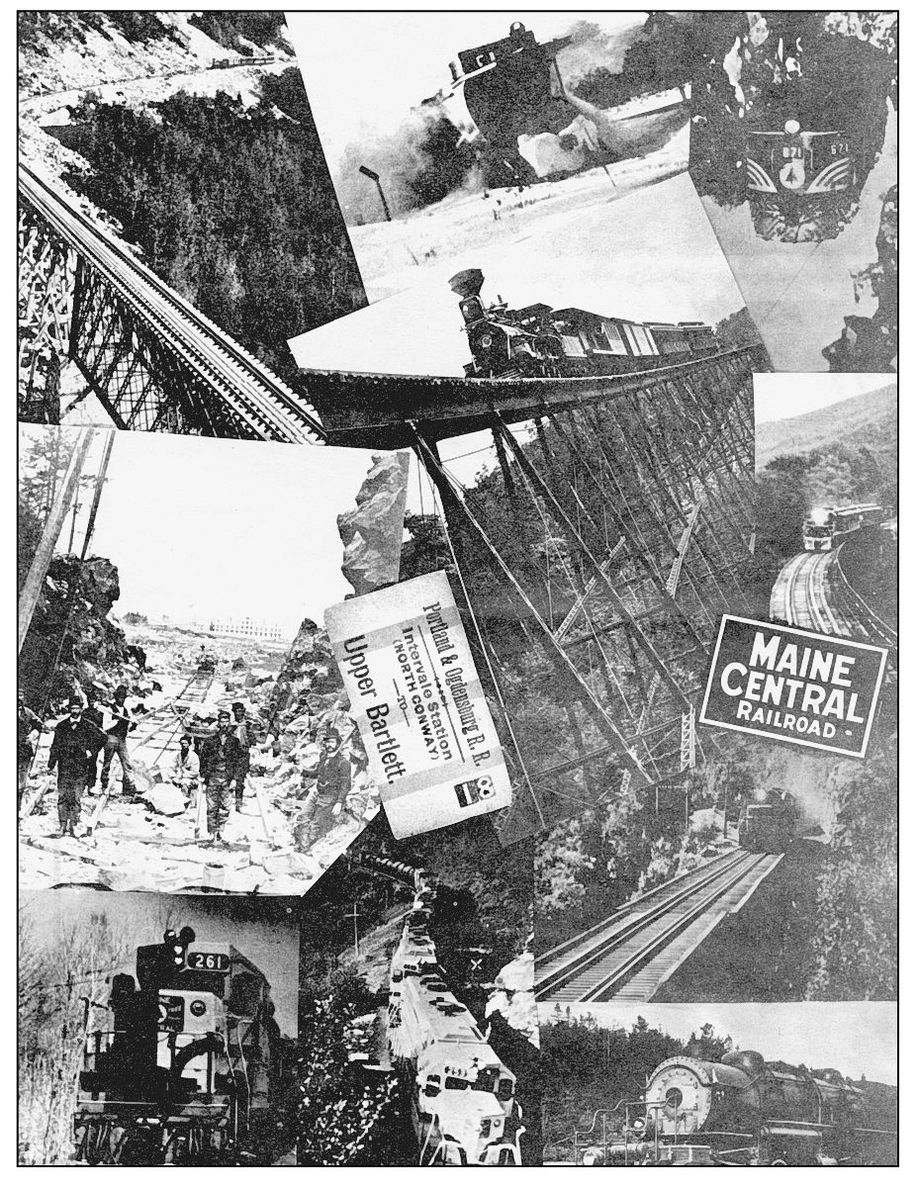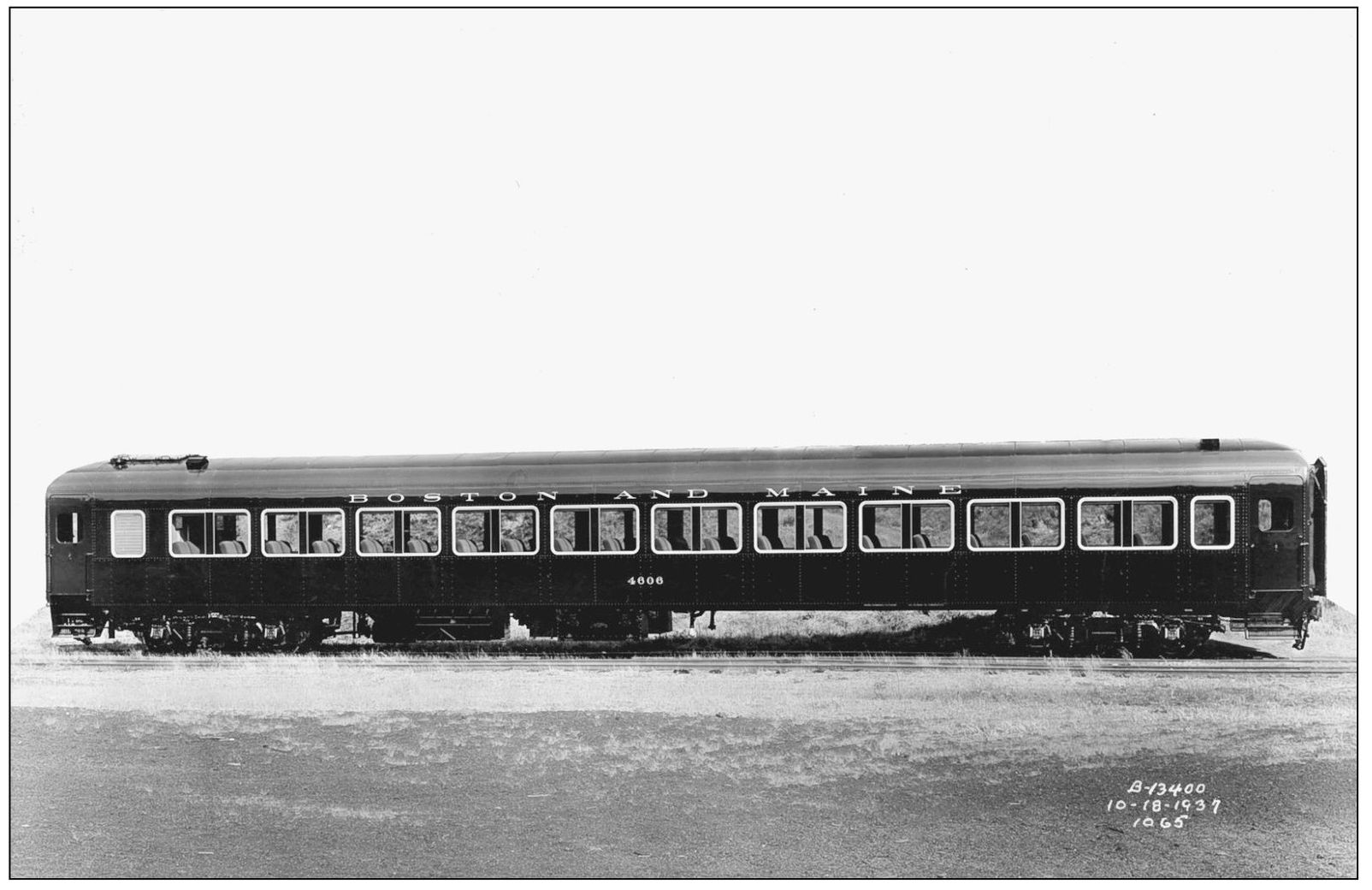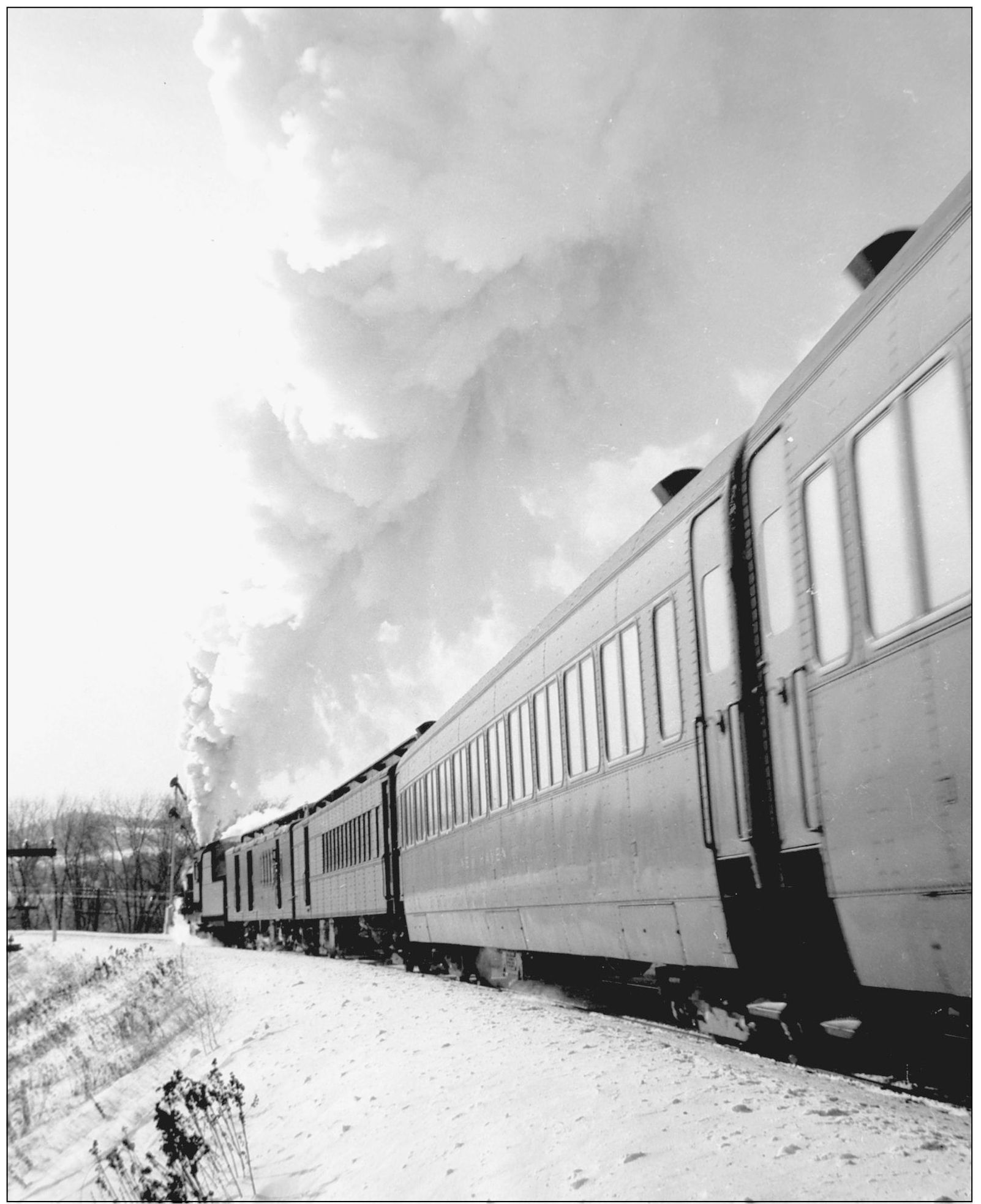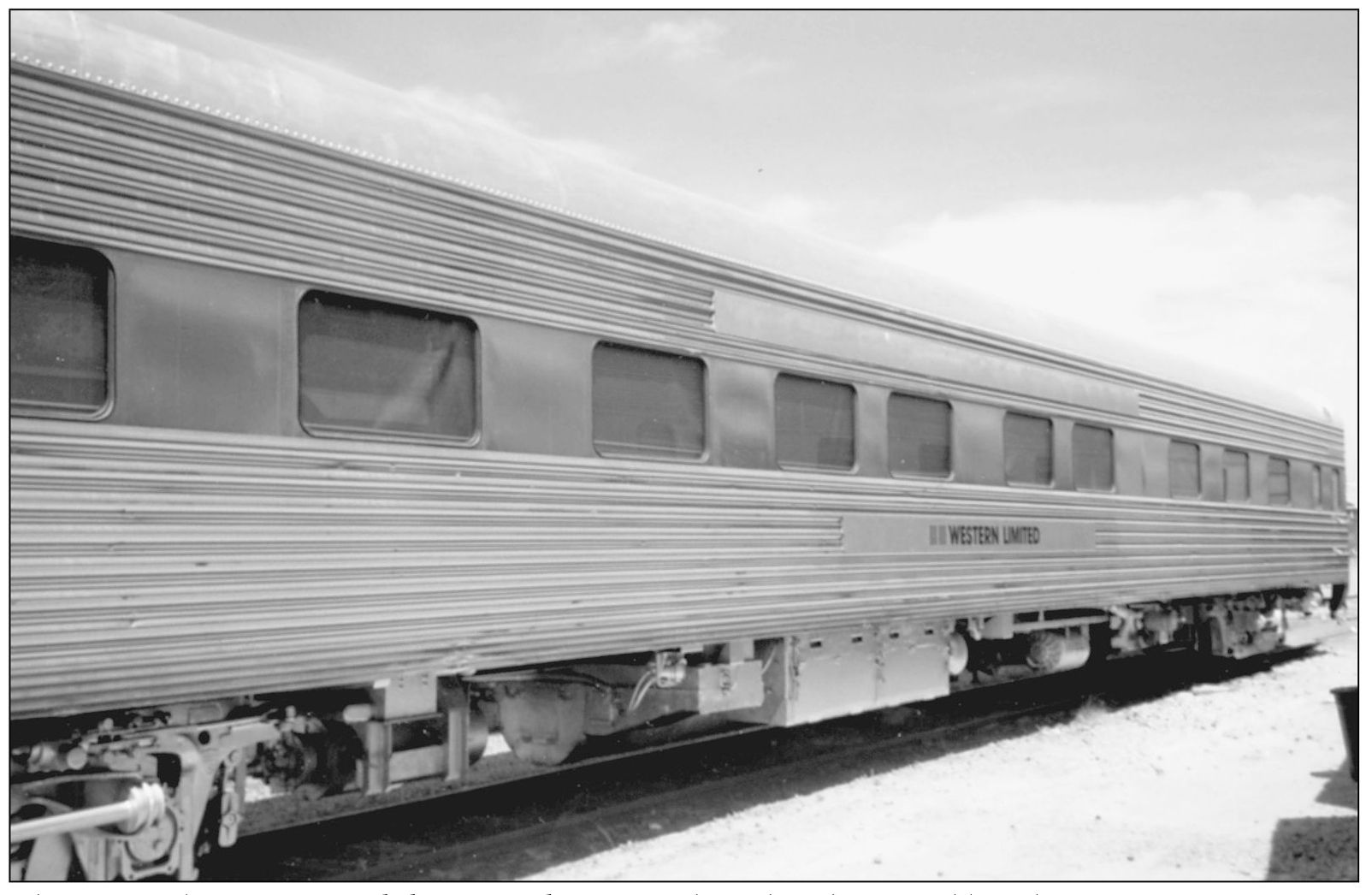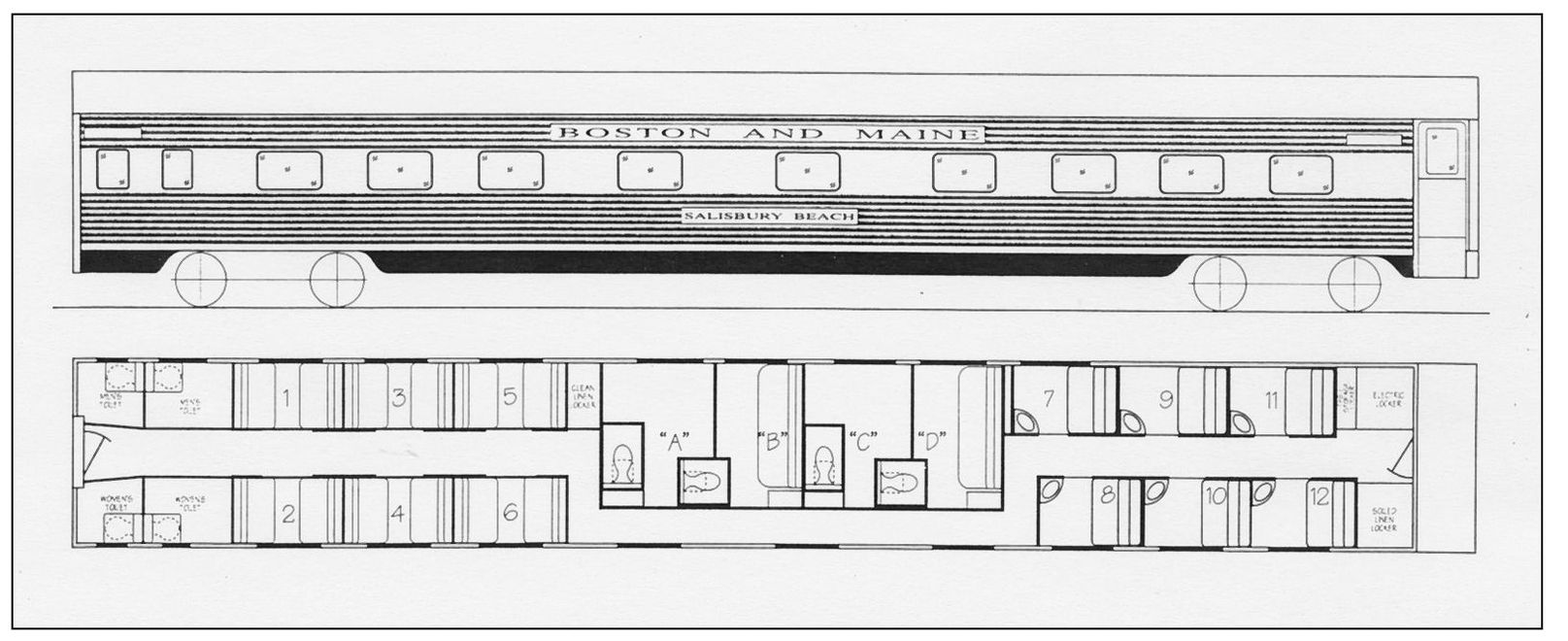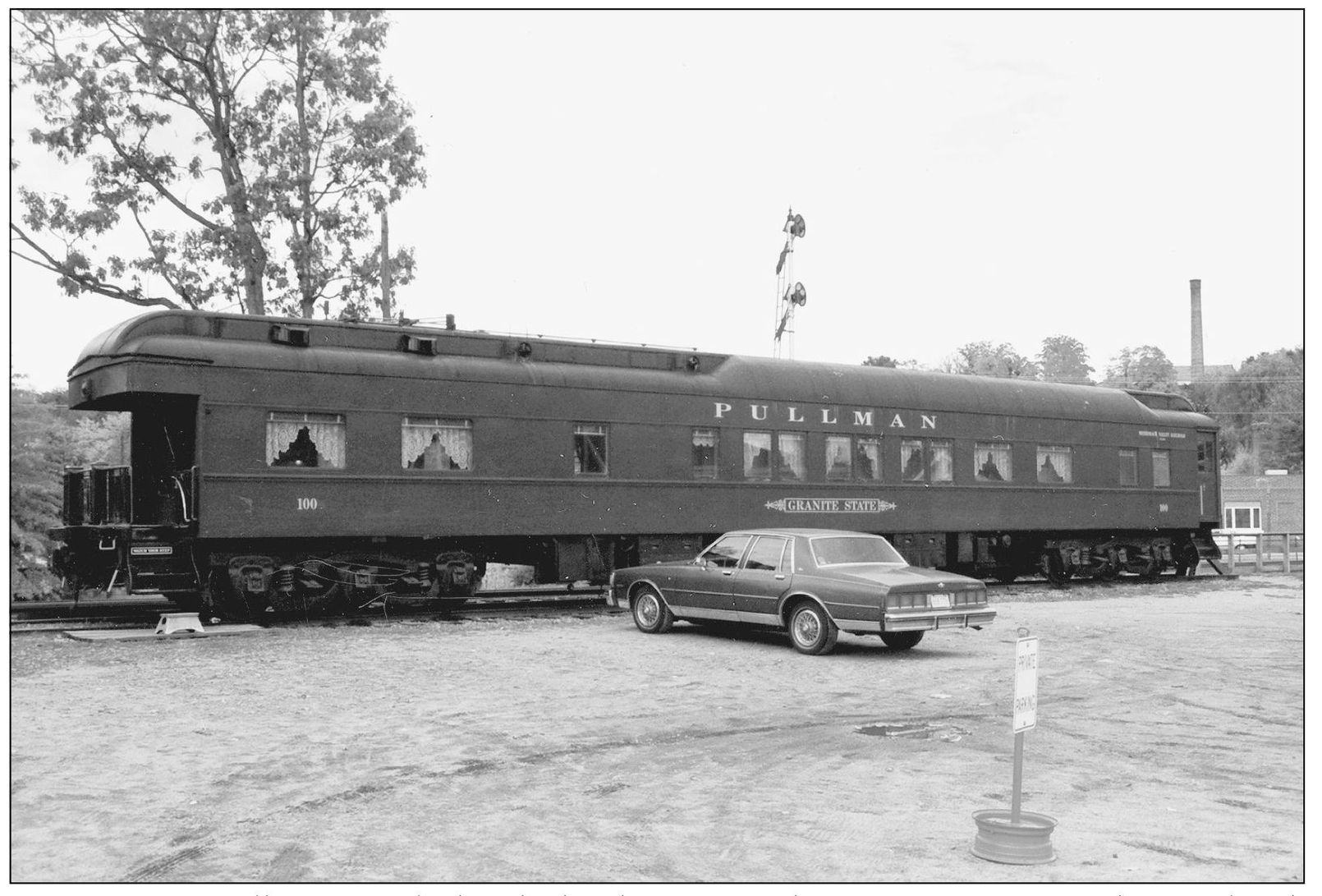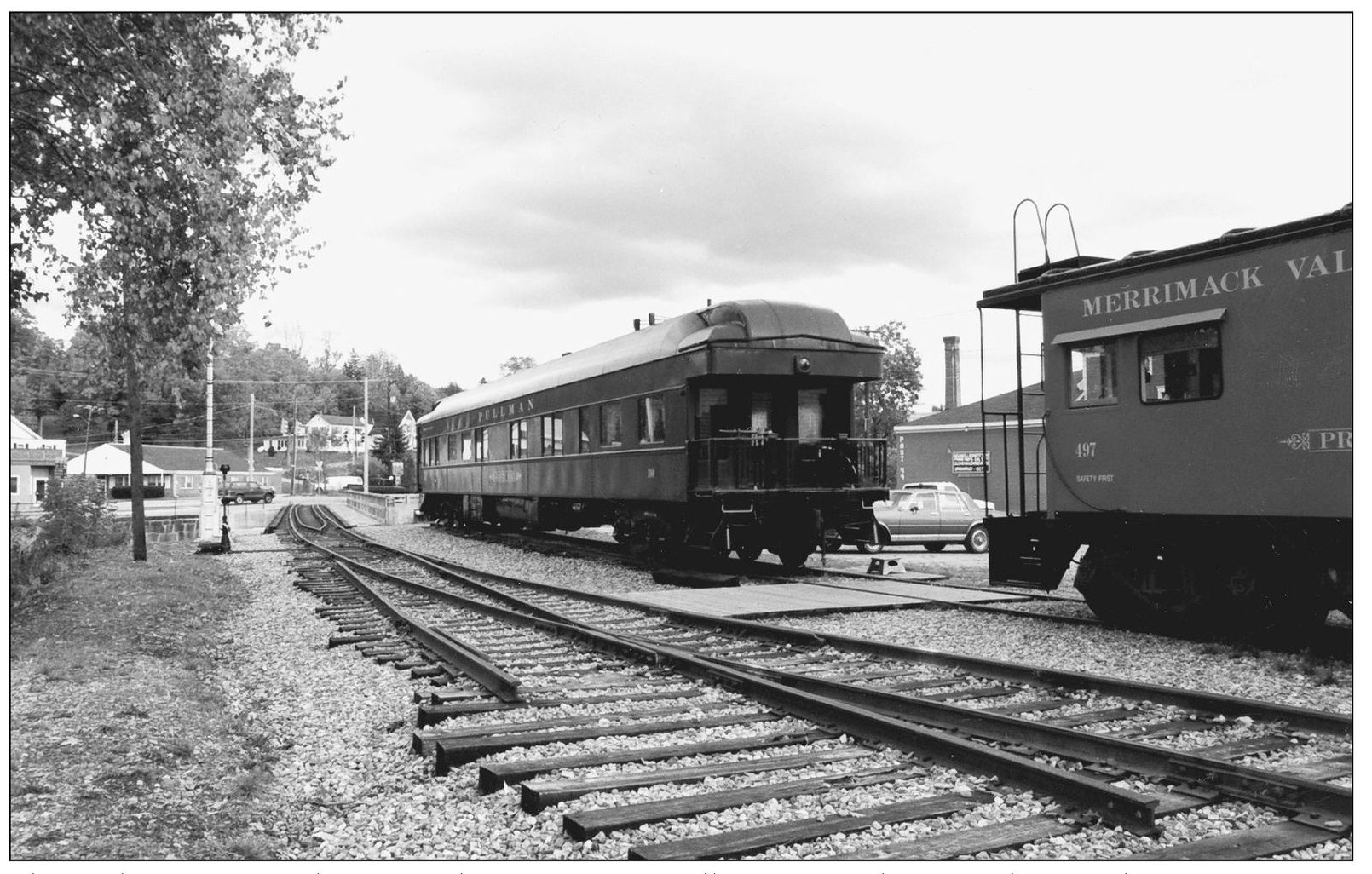One
PASSENGER, POST OFFICE, AND MILK TRAINS
The B&M Minute Man is seen in Waltham, Massachusetts, in the 1940s. This was a common sight, as daily the train connected the city of Troy, New York, with Boston.
All aboard! is the announcement made by George Strout, conductor of the B&Ms Portland Division, at North Station in the 1940s.
The Pemigewasset House and the Boston and Maine Railroad station in Plymouth, New Hampshire, are shown in the 1900s. Beginning in the late 1800s, the railroads made Plymouth a major tourist stop. There are numerous gateways to the White Mountains, but none more attractive than the Winding Water among the Mountain Pines, the interpretation of the Native American name for the Pemigewasset Valley. In 1850, the Boston, Concord, and Montreal Railroad (BC&M) completed the road to Plymouth from Concord. In 1859, the BC&M leased the White Mountain Railroad, thus continuing the road from Plymouth to Littleton, and in 1872, the track from Wing Road toward the base of Mount Washington was begun. Tourist travel was boosted when Sylvester Marsh received a charter to build a steam railroad to the top of the mountain from a point near Fabyans. The Railway to the Moon opened in 1869.
The gateway to Crawford Notch appears in the 1880s. When Capt. Eleazer Rosebrook and his son-in-law built the first inns to accommodate travelers using the new turnpike through the White Mountains Notch (Crawford Notch) in the early 19th century, they could scarcely have envisioned the trend they were establishing. The first railroad to serve this growing vacation area was the White Mountains Railroad, which reached Littleton, New Hampshire, in 1853.
Guests from the city arrive at Crawford Notch via the Boston and Maine during the late 1800s. This area of the White Mountains and the grand hotels became popular for wealthy travelers during the summer months. After the Civil War, the railroads began to cater to the needs of a growing tourist trade. In order to attract this trade to New Hampshire, the railroads invested in hotels, particularly on the Seacoast and in the White Mountains.
This early-1900s advertisement promotes B&M service to the Seacoast, lake, and mountain resorts of eastern and northern New England and the Maritime Provinces.
The Maine Central Railroad (MEC), shown in this early-1900s advertisement, later came under the control of the B&M.
The B&M American Flyer , coach No. 4606, is new at the Pullman Companys Worcester, Massachusetts, plant on October 18, 1937. These coaches were to be found on all the B&Ms tracks. For example, the morning train from Boston to North Conway, New Hampshire, regularly included one of these cars.
B&M passenger train No. 72, seen in Bradford, Vermont, in 1942, was known as the Day White Mountains Express . The locomotive was type 4-6-2. The B&M operated its first Sunday winter sports train on January 11, 1931, to Warner, New Hampshire, with 196 passengers.
The B&M sleeping car Salisbury Beach was purchased and restored by Thomas C. Pearson. It is seen here, specifically painted and lettered for filming of the MGM movie Species in La Mirada, California, on August 17, 1994.
This is a plan of a B&M streamlined sleeping car. Prior to entering service in December 1954, the railroad operated a special exhibit train that toured the terminals in the Portland and New Hampshire Divisions. This drawing (not to scale) illustrates the six-section, four-bedroom, six-roomette arrangement found in the car. The interior configuration utilized advanced designs developed by Pullman-Standard for the roomettes and bedrooms. Roomettes featured cutaway beds and permanent sinks. Sections were of the classic design with no fundamental changes.
An executives Pullman is parked at the headquarters of the State of New Hampshire Railroad. The car, just recently restored, is absolutely immaculate, not weathered at all. Note the working semaphores behind the car.


